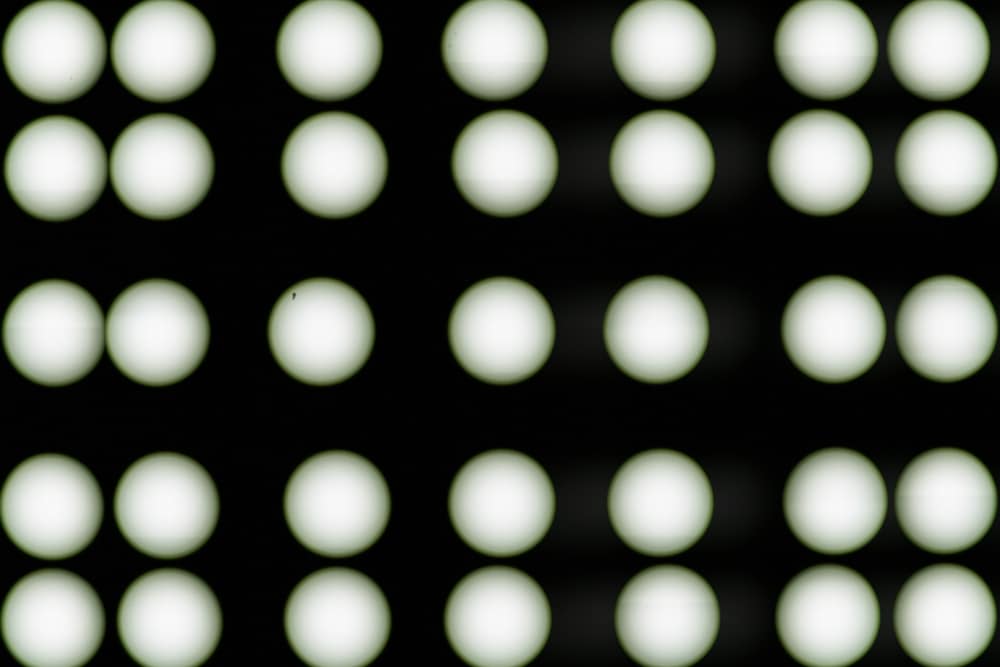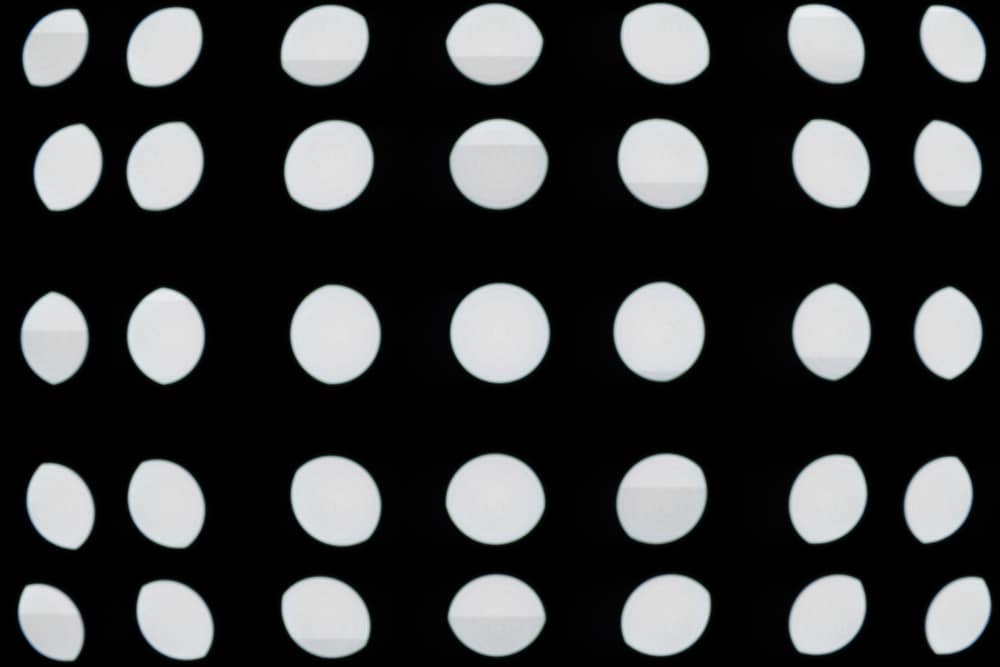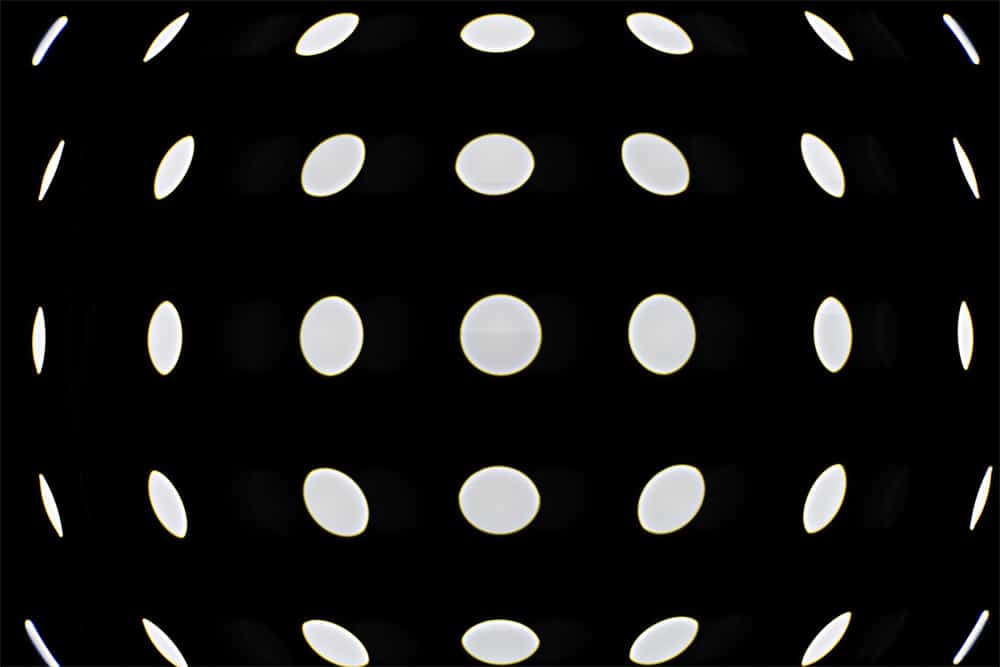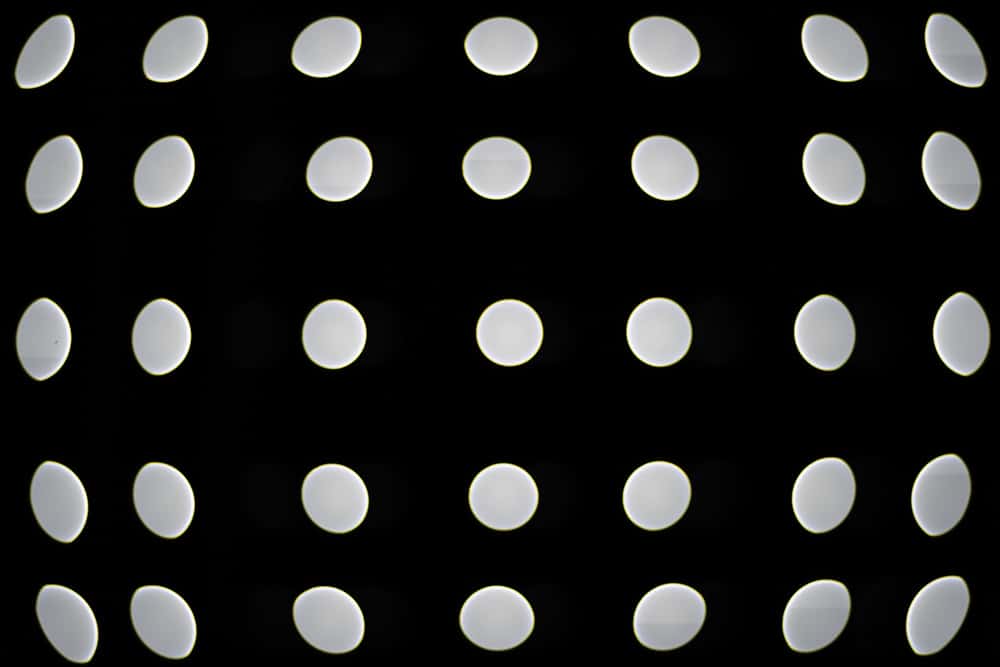This is the eighth in a series of posts that started out to be about building a bokeh simulator, and is now morphing into a broader discussion of bokeh. This series starts here.
Earlier, I posted 35 out of focus (OOF) point spread functions (PSFs) for the Sony 135 mm f/2.8 STF lens mapped onto a single image:
Before that, I posted the wide open OOF PSFs for a conventional lens, the Otus 85/1.4:
I got my hands on a lens that, like the Sony STF, was created to give pleasing bokeh. However, the makers of this lens, the Lomography 58 mm f/1.9 Petzval Art Lens. I opened it up all the way (by inserting the widest Waterhouse stop), set the bokeh control to its most agressive setting, and let her rip:
Well! Obviously, the folks at Lomography have unconventional idea about what constitutes good bokeh. The extreme off-axis occlusion of the aperture is obvious. Also unusual is the bright ring at the perimeter of the PSFs. This is called “soap bubble bokeh” and you can see why.
Twisting the bokeh control ring as far as it will go in the other direction gets us this:
Not as much occlusion, but the rings are still there on the insides of the occluded PSFs, and are quite bright towards the periphery of the image.
Can you imagine what kind of images this lens will produce? If you’ve been reading this series all along, I bet you can.
The above images were made with a Sony a7RII, but any full frame camera that you could fit this lens to would give you something very similar.




Brandon Dube says
It’s interesting that in the full aperture series the image in the corners is a line rather than a lemon or cat’s eye. That would indicate astigmatism, rather than vignetting, causing the swirl.
It is easy to diagnose what it is —
* are the corners dark extremely (yes means a lot of vignetting, which you would need to get that kind of line-like image)
* do the corners sharpen slowly/badly if you stop down (no means there’s a lot of astigmatism)
On their about page, the corners clearly darken as the ‘bokeh control’ is added, but in particular the gif with the man in front of the trees, you can clearly see the brick wall behind him nearly go in focus in one axis momentarily. My money would be on very extreme higher order astigmatism in this one. I wonder how they induced it with only 4 elements.
JimK says
I did not equalize the 35 PSFs. So you can see that the reduction in area towards the corners in the Petzvals is not accompanied by a compensating increase in average intensity.
JimK says
Yes. I’m not sufficiently knowledgeable to talk about astigmatism, but the extreme inside distortion of the PSF are curved the wrong way for vignetting.